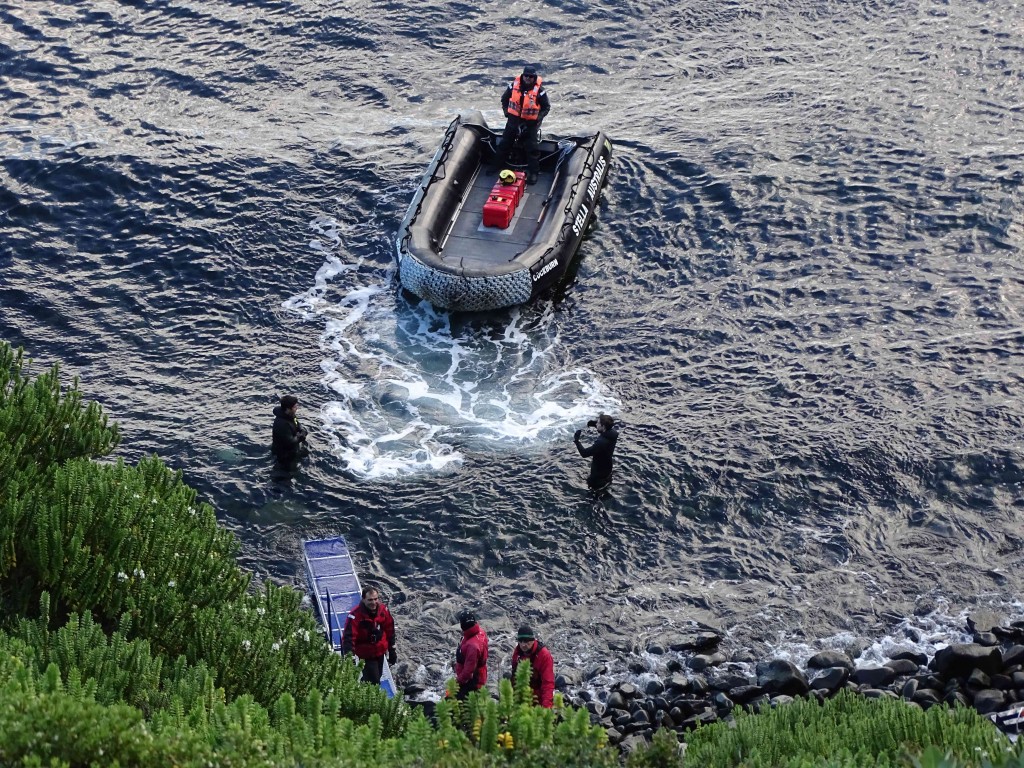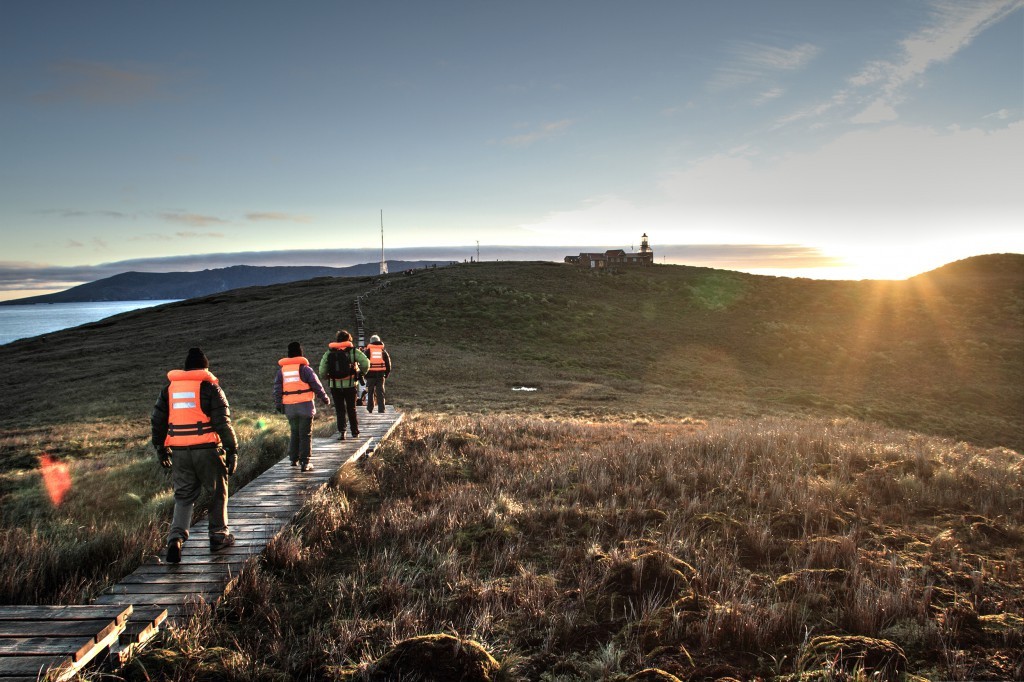Landing at Cape Horn
July 5, 2015 - 3 minutes read
On a calm day, when the weather and the sea fully cooperate, landing at Cape Horn seems like a piece of cake. But in reality, putting people ashore at South America’s southernmost point is harder than it looks to the untrained eye.
“Our main objective is to reach Cape Horn,” says Captain Jaime Iturra of Australis‘ MV Stella Australis. “Landing is a bonus and we only achieve that 70-80 percent of the time. Our goal is to get the ship into a position where passengers can see the island and the lighthouse. If conditions and weather permit, we take people ashore.”
Iturra says that each captain that visits Cape Horn on a regular basis has developed a unique strategy for tackling the challenge, a particular place or way to anchor in order to expedite a shore landing.
“I found a place protected from the wind by a huge wall,” he explains. It’s a good place to anchor even when there is a rough, heavy swell. The beach conditions also vary. It can be impossible to land on a day with lights wind because the surf is too high or the tide out too much.
Each time, upon arrival at Cape Horn, Iturra discusses the landing conditions with the expedition team leader, and together they decide if it’s safe enough to take people ashore. “You must study the conditions of the areas to make a decision,” says Iturra.
If a shore landing gets the green light from the captain, Australis takes special precautions to transfer passengers from the Zodiac boats to the tiny dock at Cape Horn Island. Normally the expedition team is joined by several other crew members in assisting the passenger transfer, at least two of them in wetsuits in the water on either side of the Zodiac — something that isn’t done at any other landing along the Australis routes.
In order to ease the climb to the island’s steep cliffs — with its Cape Horn Monument, lighthouse and chapel — Australis built a steep wooden staircase from the dock to the summit. The company also constructed the wooden walkways that meander across the island’s fragile, sub-polar vegetation.
Even with people ashore, Iturra and his crew continue to monitor the weather and water. “Conditions can change very quickly in this area,” he says. “In an hour or even half an hour you can get something completely different.” That may require a quick return to the ship.
While landing on the island may not be a “slam dunk” on every trip, the Australis ships manage to reach the cape on nearly every voyage. “If you can’t reach the Cape Horn Archipelago it’s probably because there are hurricane conditions with 200 km per hour winds and it’s really scary. But that doesn’t happen very often.”
Tags: Australis, Cape Horn, Chile, End of the World, landing at Cape Horn

0 Comments